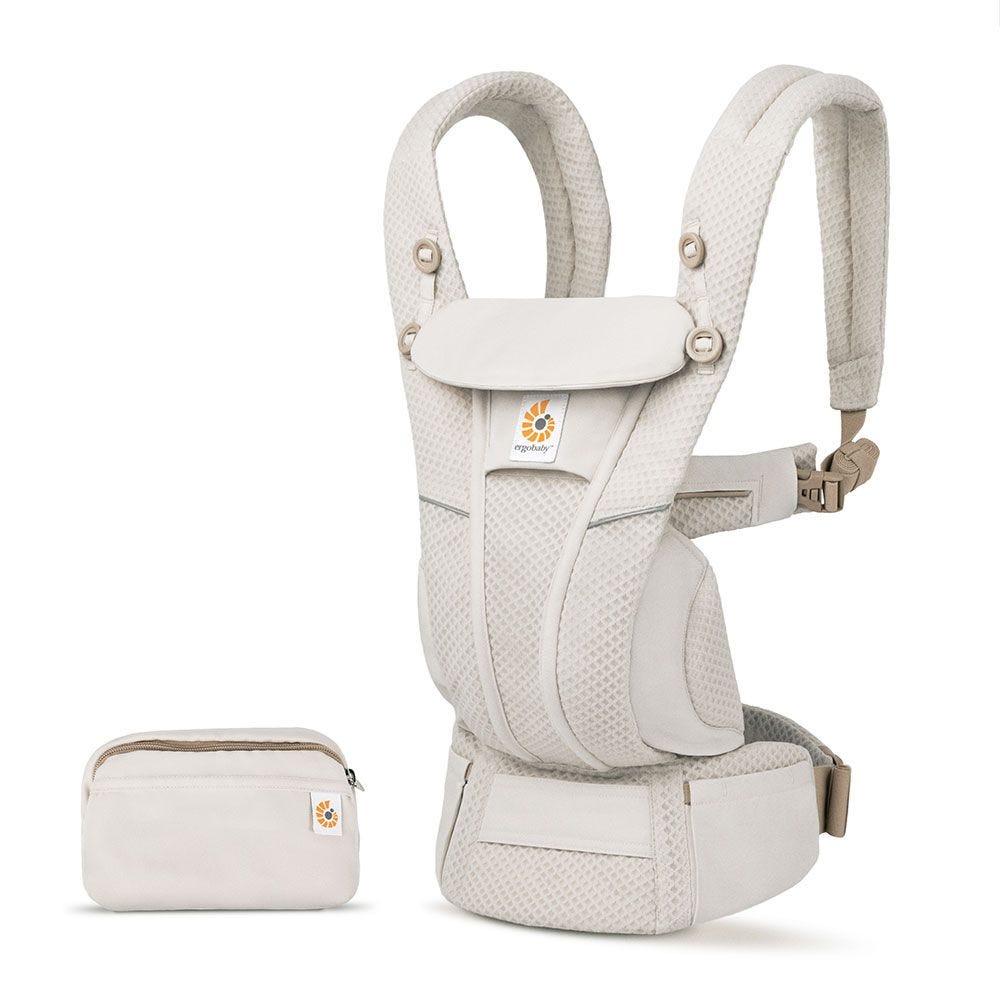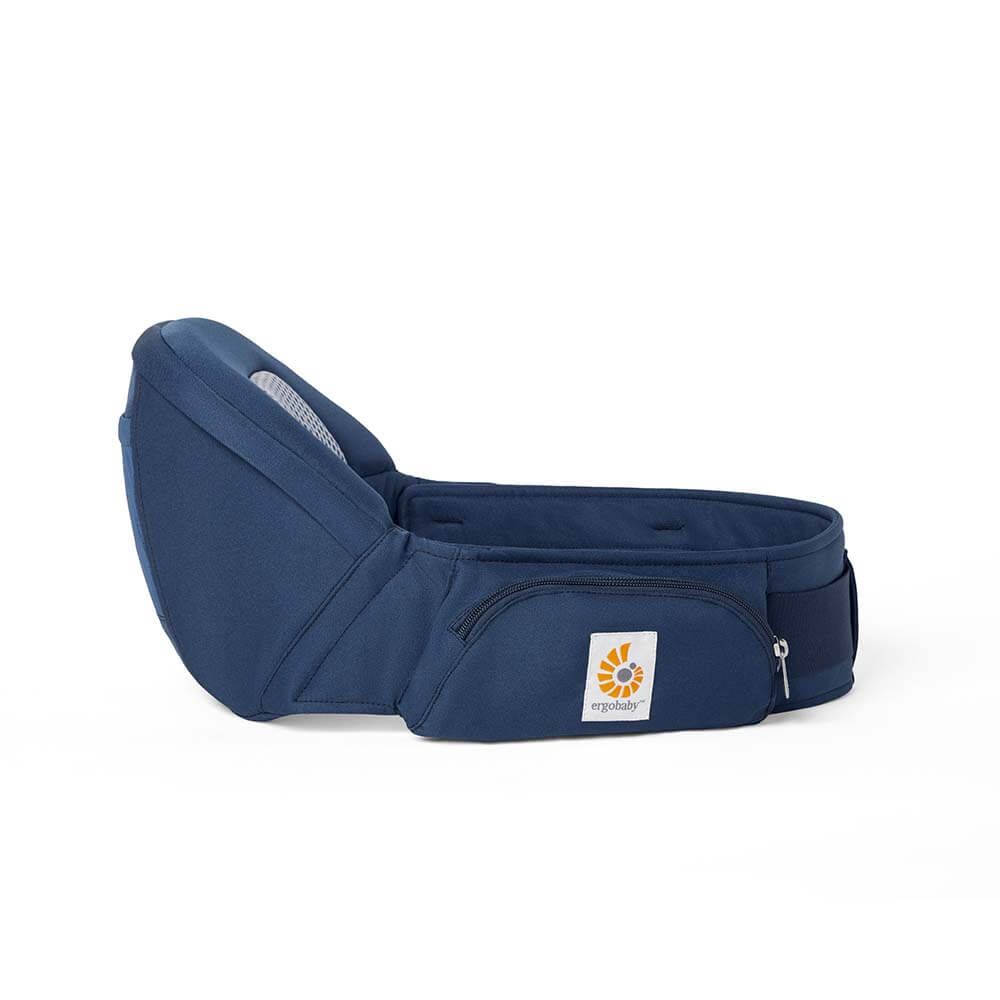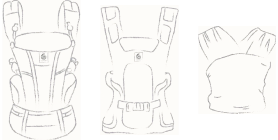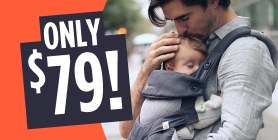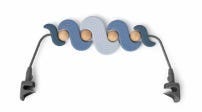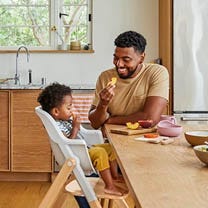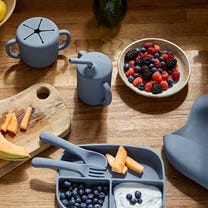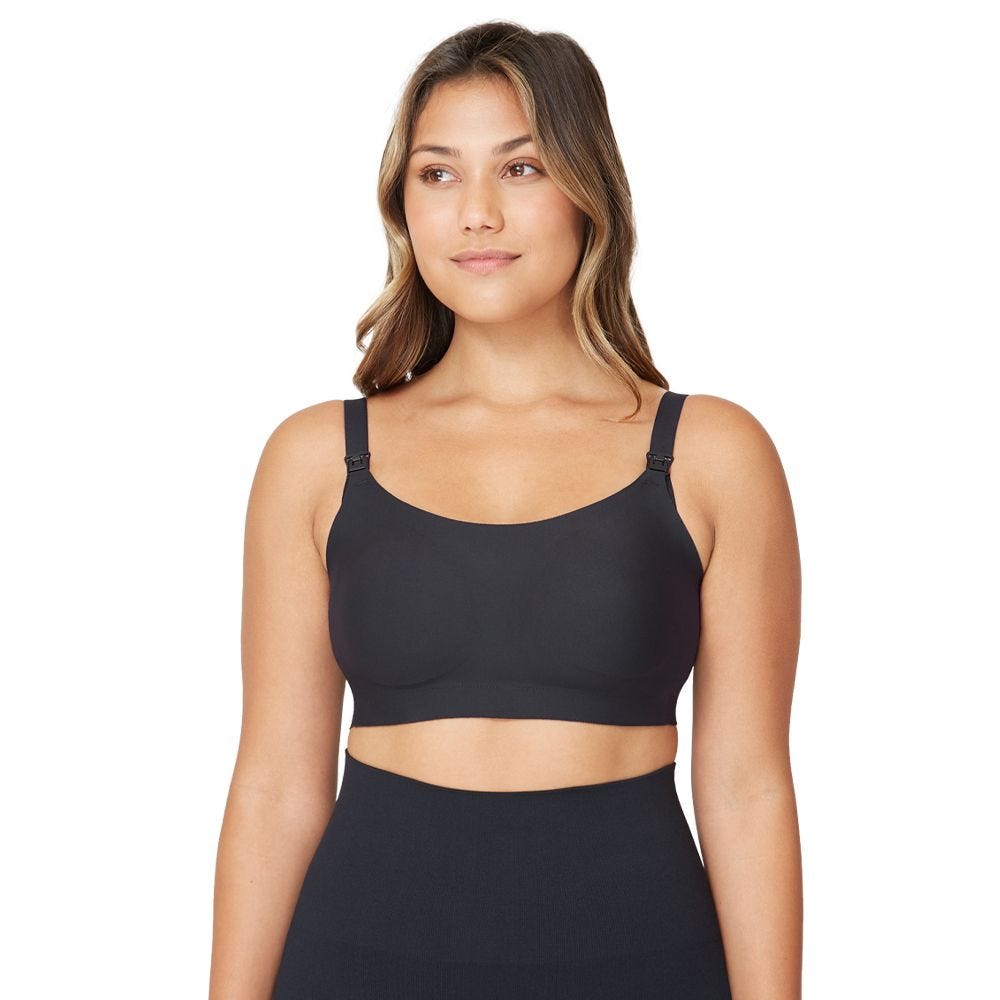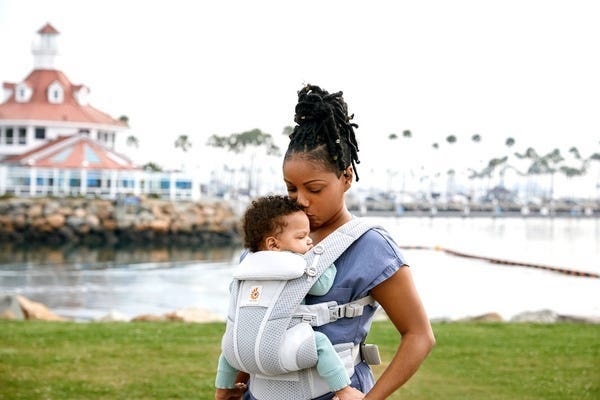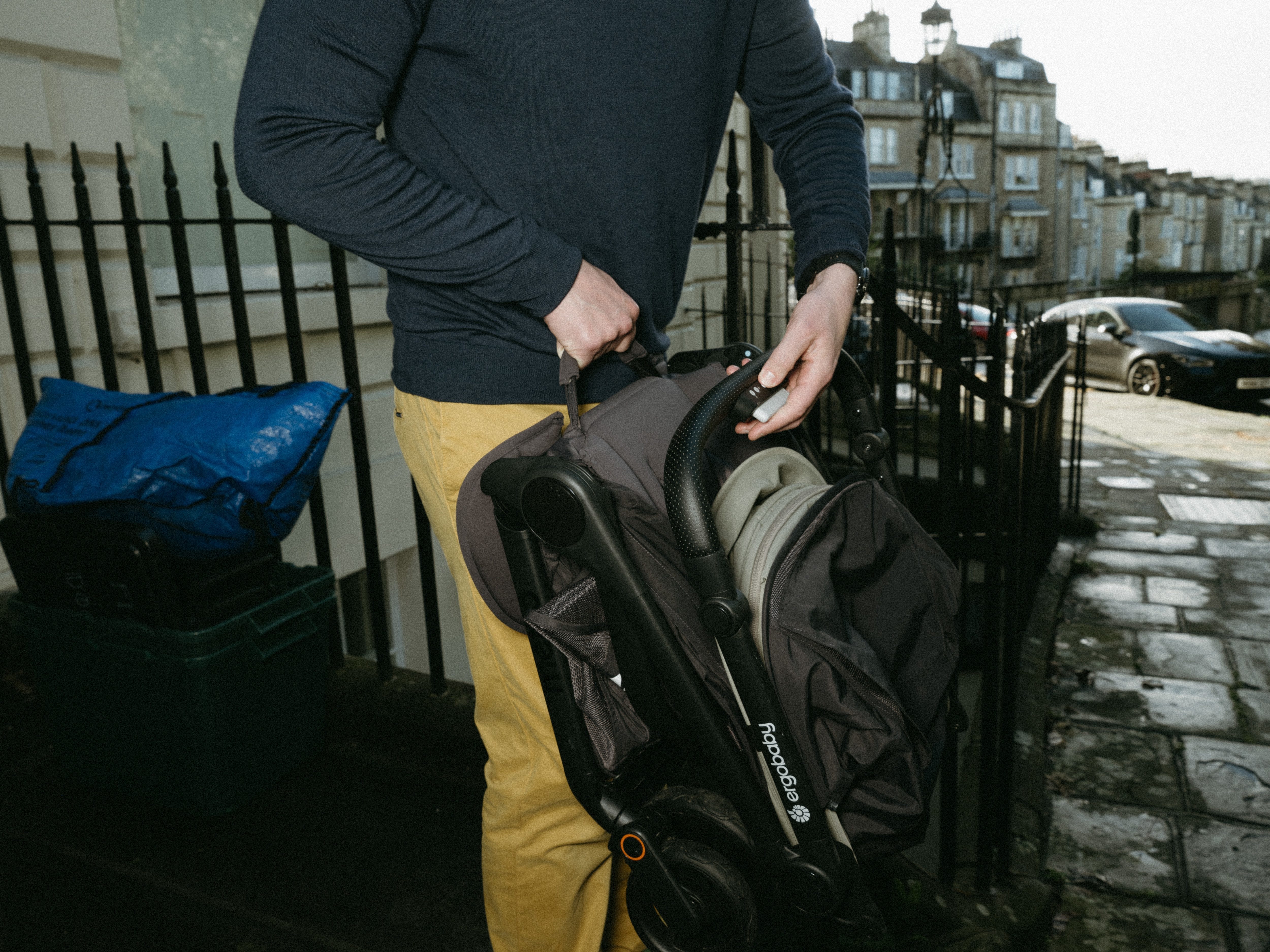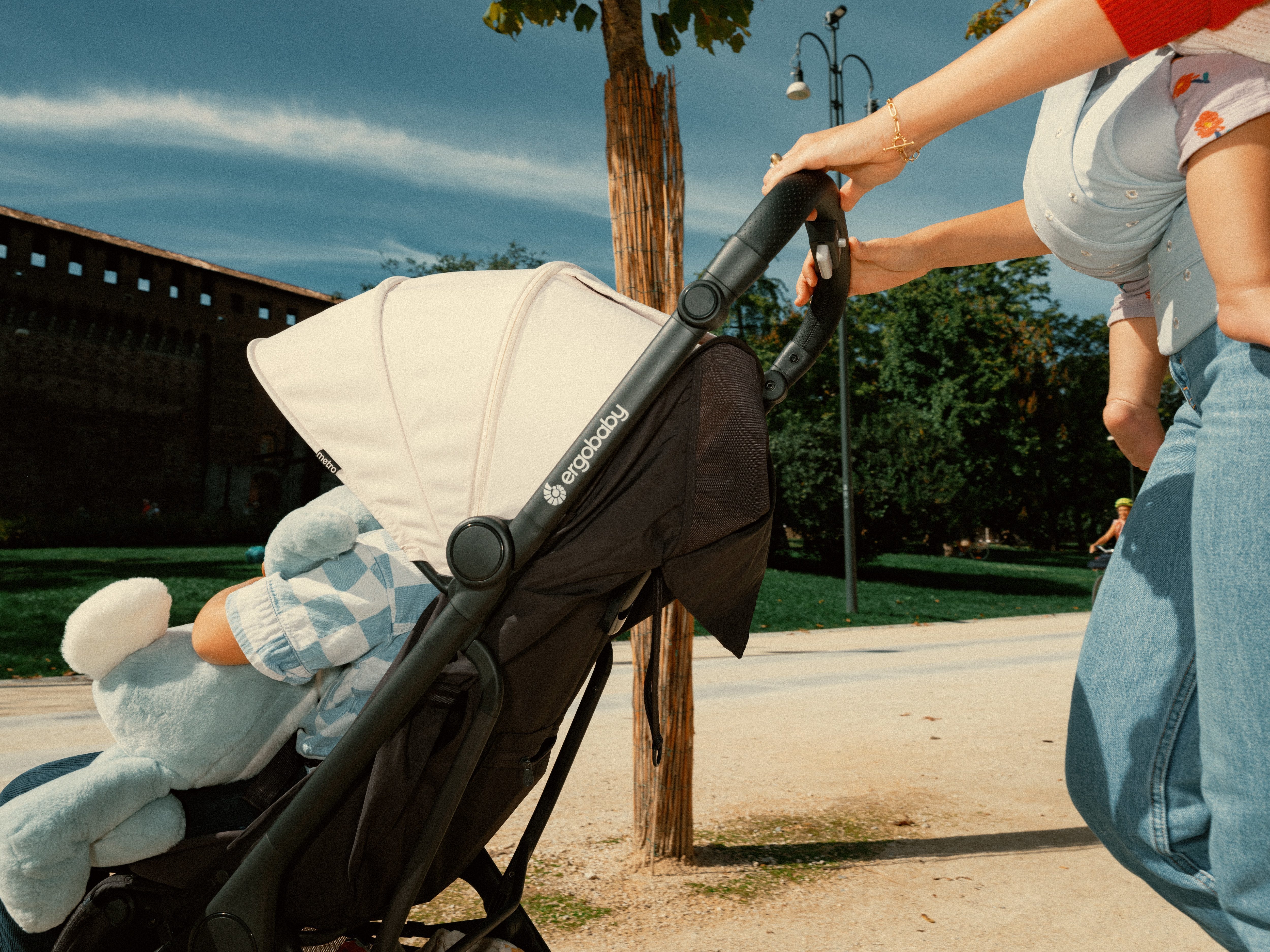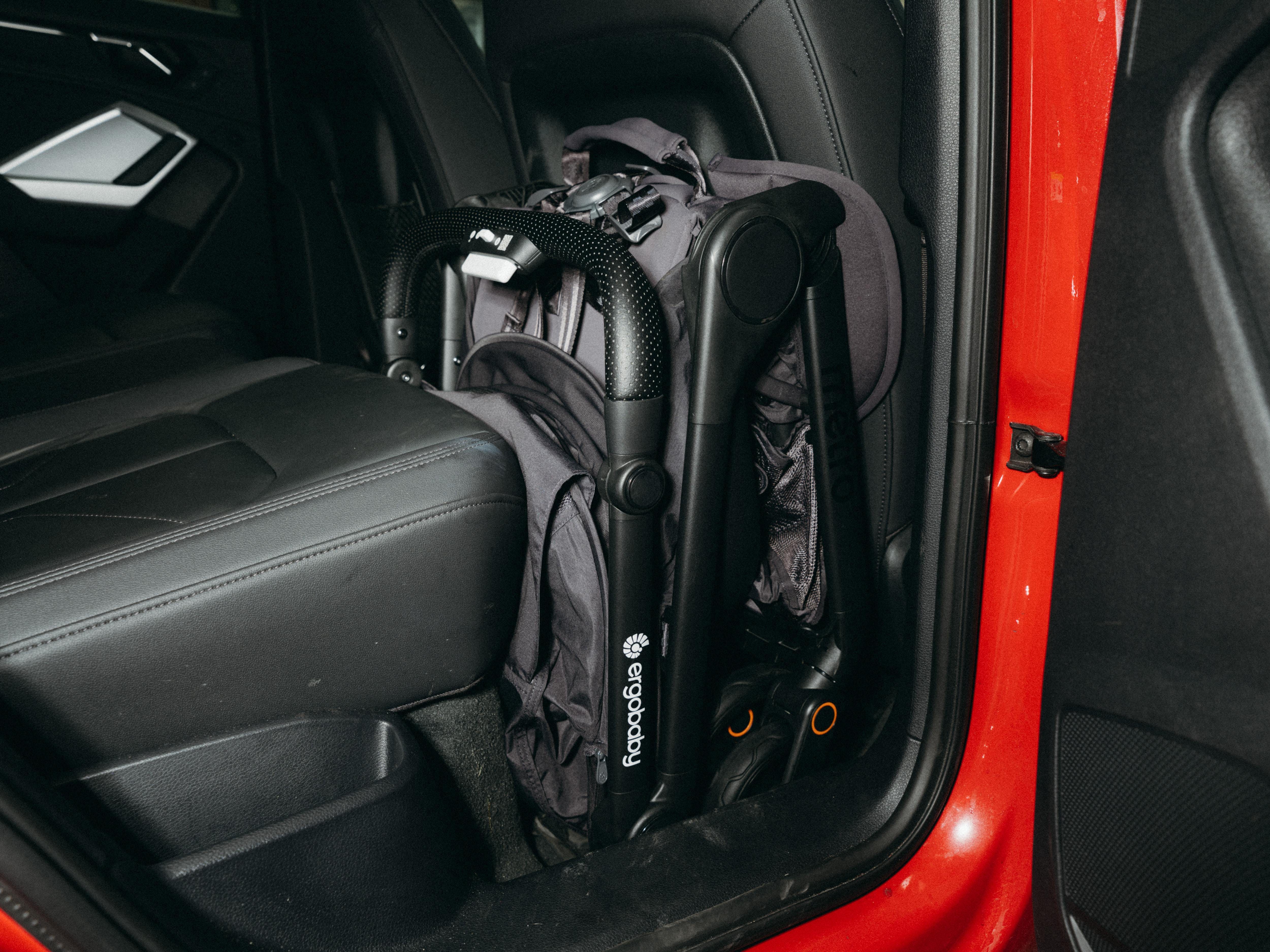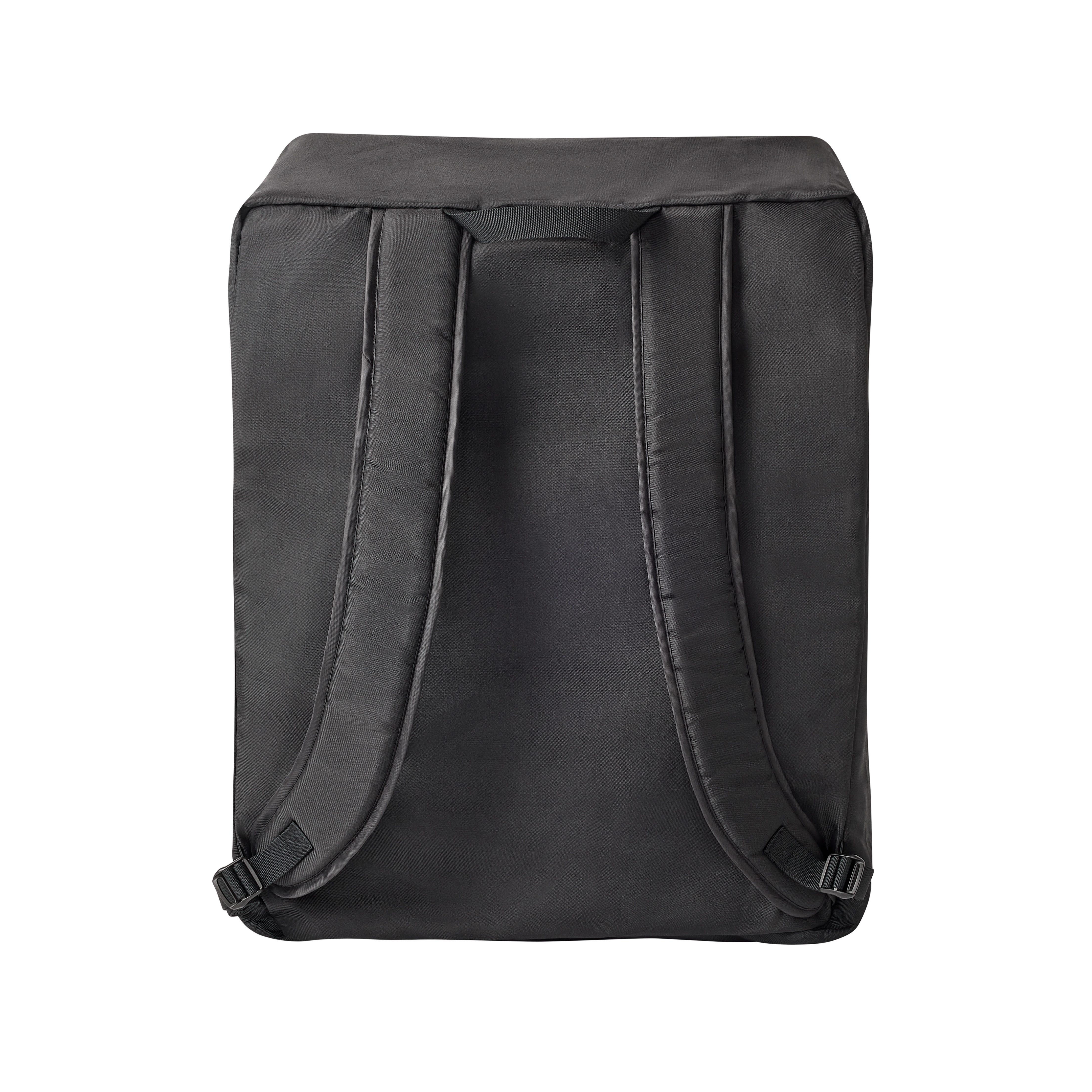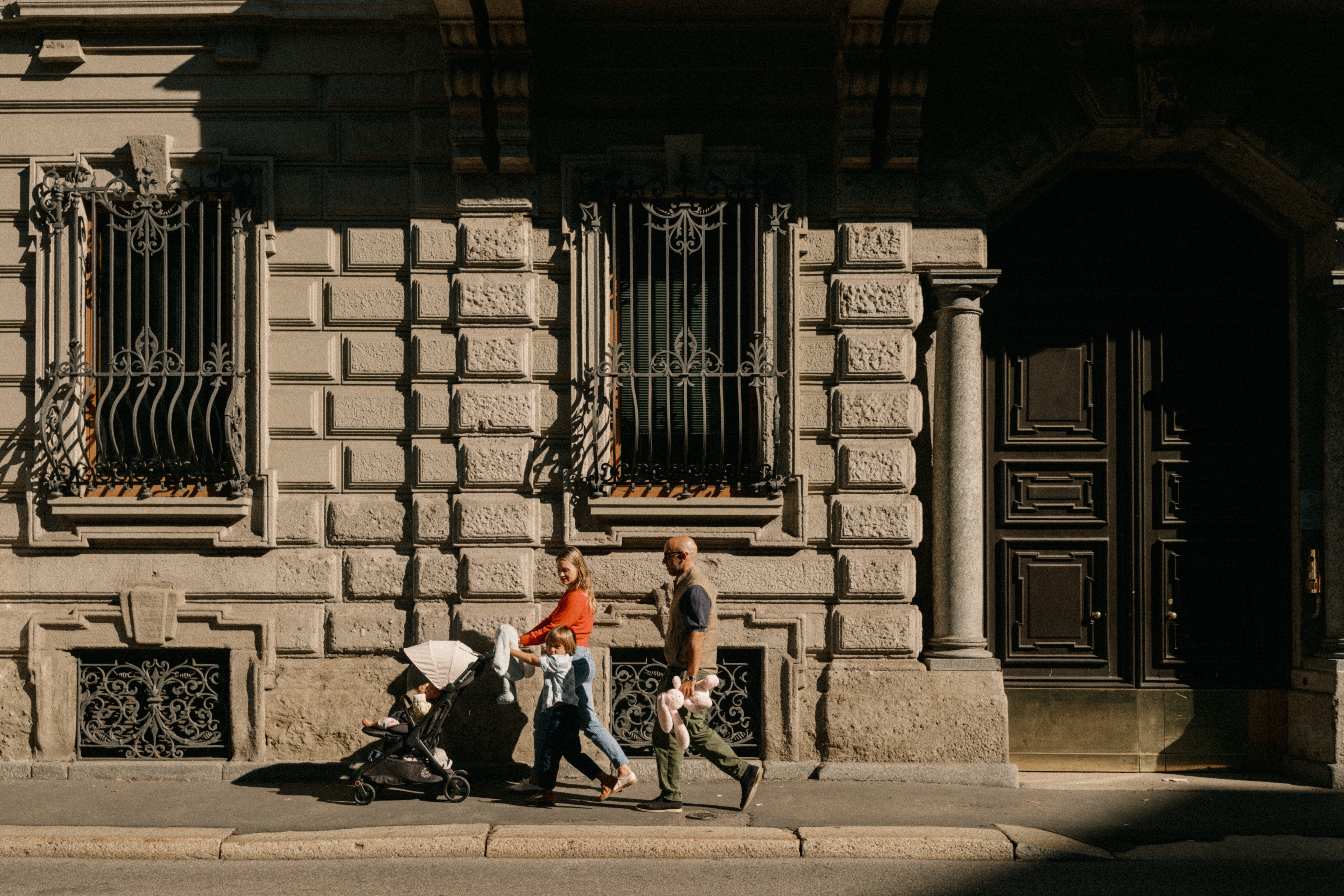
If you haven’t already learned, babies come with a lot of baggage. Diapers, wipes, toys, clothes, bottles, baby carrier, baby stroller and car seat – it’s like a never-ending packing list if you’re traveling with a baby. Thankfully, airlines understand that flying with kids is hard, which is why they try their best to accommodate families. As such, they allow parents to bring the most necessary baby items along with them – many even for free! So if you’ve been wondering if strollers and other baby gear count as carry-ons or if you can bring formula on the plane, here are the answers to those and other commonly asked questions about flying with a baby.
Emotional Benefits of Getting Outside
Spending time in nature with your baby can strengthen the bond between you. The simple act of holding your baby close, feeling their warmth, and sharing new experiences together can create strong emotional connections. It’s also a wonderful way to reduce stress and improve your mood. When my littles were extra fussy, I’d take a walk around the neighborhood. Even though I don't live in an area with trails and surrounded by nature, simply behind outside changed everything. A little vitamin D does wonders!
Cognitive Development
Nature is a sensory wonderland for babies. The different sights, sounds, and smells can stimulate your baby’s senses and promote cognitive development. Watching leaves rustle, hearing birds chirp, and feeling the texture of a tree bark can all contribute to their learning and development.
Does a stroller count as a carry-on?
Strollers are considered special items or assistive devices, so they typically don’t count toward your carry-on baggage allowance and fly for free.
TLDR: Most airlines do NOT consider a stroller a carry on. HOWEVER, the specs or recommendations from airline to airline may differ, so it's a good idea to check with the airlines in advance.
Spoiler Alert: Ergobaby's Metro 3 stroller is small enough to fit in most airplane overhead bins so can easily be taken along any journey.
Air Canada
Air Canada lets you bring one stroller for each child you’re traveling with in addition to your carry-on and checked luggage allowance for free. This airline does highly recommend small, collapsible umbrella strollers – with a maximum collapsed diameter of 10 in. and a maximum length of 36 in. – that you can check at the baggage counter or boarding gate. Large, heavy strollers have to be checked at the baggage counter, and their website states that if space is limited, the aircraft may not be able to accommodate your stroller.
Alaska Airlines
You can check a stroller and child restraint system for free as part of your checked baggage at the ticket counter or at the gate.
American Airlines
Each ticketed passenger can bring one stroller and one car seat to be checked for free. However, you can’t check a car seat and a stroller at the gate. One will have to be checked at the ticket counter. Strollers weighing more than 20 lbs. must be checked at the ticket counter. All other strollers can be checked at the gate.
Delta
Children’s strollers and safety seats aren’t counted as standard baggage. You can check both for free before you go through security at the curbside or ticket counter, or you can check them at the gate.
Frontier
A stroller and a car seat can be checked for free with Frontier. You can check both at the ticket counter or gate.
JetBlue
Strollers and car seats don’t count as a carry-on or checked bag allowance. JetBlue lets you check them for free right when you get to the airport or at the gate at the jet bridge. According to JetBlue’s website, “strollers are not covered for damage if checked. JetBlue assumes no liability for loss, damage or delay per the JetBlue Airways Contract of Carriage Section 19.”
Southwest
You can check one stroller and one child restraint system for free along with the regular free baggage allowance on Southwest flights. Any type of stroller can be checked at the gate, ticket counter or curb. You can also buy a reusable car seat/stroller bag at one of their ticket counters. Southwest’s websitestates that it doesn’t assume liability for damage to strollers or car seats.
United
United Airlines accepts one stroller or folding wagon free of charge along with a car seat on domestic flights and infants traveling internationally on 10% of an adult’s ticket fare. Small strollers can be checked at the gate, but large, non-collapsible strollers and non-folding wagons must be checked at the ticket counter. If you bring a compact folding stroller that meets United’s size guidelines, you can bring it on board in addition to your carry-on bag and personal item, but you can’t open it on the plane.
Why do I need a compact stroller?
There are a LOT of stroller options on the market. So we understand how confusing it can be to choose the one that's right for your family. Not only are there a variety of brands, but a variety of strollers that serve different purposes. Compact strollers, sometimes referred to as umbrella strollers, are exactly what its name claims—compact. It’s compact when it’s folded and when it’s in use. It’s small enough so you can walk up and down store aisles and hallways or push in and out of elevators without taking up the entire space.
Plus, being so lightweight and portable, there’s no hassle flying with a compact stroller. You won’t need to buy a gym membership and take up weightlifting before buying a compact stroller. It’s also convenient to store. You can fold it up and stick it in your coat closet, garage, or the trunk of your car and still be able to fit everything else in those areas you need. Unfortunately, most compact strollers on the market are flimsy, poorly made, and not comfortable for baby and parent. And many are not newborn friendly. That's where Metro+ comes in. Our Metro+ Strollers take compact comfort to the next level:
- Ultra-compact and lightweight — Its folded dimensions are 20.8 x 16.9 x 9 inches, and it only weighs 14 pounds. These numbers simply mean this compact stroller is easy to steer (Even with one hand!) and store.
- One-hand fold — Hold your newborn or a wild toddler all while folding up the stroller. And unlike many compact strollers, you don’t have to reach underneath the stroller to fold it up.
- Smooth ride suspension — With its spring suspension and large back tires, your baby won’t wake up when you walk over curbs, sidewalk cracks, or bumpy trails.
- Ergonomic comfort — Like our baby carriers, your baby will experience ergonomic comfort in this stroller. The cushy padded seat supports your baby’s head, neck, back, bottom, and legs, while the deep recline and adjustable leg rest help your child kick back and relax into a long snooze.
- Spacious storage spaces — You don’t just get a large storage basket under the stroller; you also get a hidden seatback pocket to hold everything you and baby need on your day-to-day adventures.
- Removable seat pad — We know how messy life with kids gets. That’s why we made our seat pad removable, so you can throw it in your washing machine after every spilled milk, smashed crackers, and blowout fiasco.
- All-season accessories — The stroller’s materials and large UV-50 sun canopy with a peek-a-boo window allow you to use it through every season. It’s also compatible with our Weather Shield for a rainy or windy day.
- Ready from day one — Start using from the day your baby is born up until he’s 40 pounds with newborn nest mode or car seat adaptors.
For families who are often on the go whether it's around town or traveling, Metro+ is a must.
Exploring Nature with a Baby Carrier
Can you take a stroller on a plane?
Most airlines require you to check your stroller at the ticket counter or gate. United is an exception. United lets you bring a small compact folding stroller on board as long as it meets their size guidelines. United does ask that you collapse the stroller before boarding, don’t open it while on board and place it in the overhead compartment or under the seat in front of you. The Metro+ Stroller fits most airplane size guidelines! It can fit easily in the backseat of even the smallest cars or in the trunk or your Uber. If your stroller is small enough and the flight isn’t full, the airline may let you bring it on the plane. All you have to do is ask.
Advantages of Using Strollers for Nature Adventures
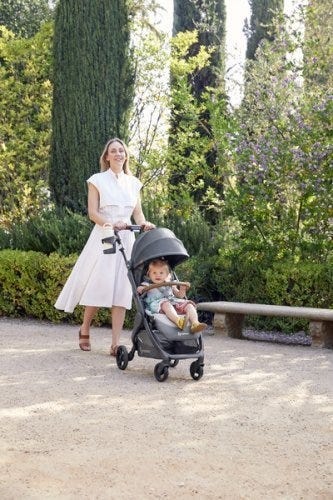

While baby carriers are fantastic for mobility and closeness, depending on the adventure of choice you might want to be a stroller along too.
There are a LOT of baby stroller options on the market. So we understand how confusing it can be to choose the one that’s right for your family. Not only are there a variety of brands, but a variety of strollers that serve different purposes.
There are a few types of strollers on the market:
- Full-sized stroller: This is typically the stroller parents thing of buying for all its versatility.
- Lightweight or umbrella stroller:These compact strollers are perfect for on-the-go adventures.
- Jogging stroller: Designed for parents who want to combine fitness with outdoor adventures.
- Double stroller: Designed for parents with multiple kids, especially twins.
- Car seat carrier: These strollers connect to a specific car seat. We don't typically recommend these as they can be unsafe for baby and uncomfortable for parents who are pushing.
Learn more about the types of strollers and which one would be best for you.
How do you protect your stroller when flying?
Protecting a stroller when flying is no easy task, especially if you’re checking it at the ticket counter. You have no control over the baggage handlers, weather or other checked luggage. But there are some things you can do to help protect your stroller:
-
- Buy a stroller bag. Get one that’s durable and easy to carry. We have a stroller carrying casefor our own Metro+ stroller.
- Wrap it up. Wrap the entire stroller in bubble wrap and tape, or just wrap the handlebars and frame with pool noodles or self-adhesive bandage wrap.
- Remove stroller accessories. If you can fit them in your carry-on, take off the stroller’s hood, cup holders and tray to keep them safe.
- Check it at the gate. If you can check the stroller at the gate, do it. That way you can use the stroller through the airport, and it’s less likely to get damaged or lost.
How do you take a stroller through security?
According to the TSA website, strollers have to be screened by X-ray. If you have a small compact folding stroller, first take your baby out and then take out anything else and place them in your carry-on or a bin on the X-ray belt. Next, fold up the stroller and place it on the belt to be screened. Strollers that won’t fit through the X-ray machine have to be visually and physically inspected by a TSA agent. In my experience, going through airport security alone with a baby and a stroller can be more stressful than the actual flight. But you don’t have to go at it totally alone. If you have questions or need help, just ask the nearest TSA agent.
Does a diaper bag count as a carry-on?
In most cases, a diaper bag is considered a personal item and therefore will count toward your carry-on limit and must meet the size requirements laid out by the airline. There are some exceptions. United doesn’t count a diaper bag as your carry-on or personal item, Frontier lets you carry on a diaper bag free of charge and American Airlines allows one carry-on diaper bag per child. Airline policies can change, so it doesn’t hurt to ask the airline you’re flying before your trip.
What can you take on a plane for your baby?
Can you bring water for baby formula on a plane? Can you take milk for your baby on the plane? Can you bring a breast pump? It’s a lot for you to remember to pack everything you need when traveling with a baby and knowing exactly what you can take while flying. According to the TSA, formula, breast milk, juice and water for babies “are permitted in reasonable quantities through the security checkpoint.”
Let the TSA agent know if you have any of these items in excess of more than 3.4 oz. as well as any baby food, ice packs and gel, or liquid teethers. These baby items will have to be screened separately from your other belongings. Sometimes they are simply screened by X-ray and other times they have to go through other screening procedures. Most airlines also allow other baby items that don’t count as a carry-on, which can include a car seat, bassinet, breast pump and cooler bag for breast milk. Ask the airline beforehand so you know exactly what you can take on board for your baby. You can also review TSA’s What Can I Bring? List before traveling.
Please note that policies vary from airline to airline and policies can change. It’s a good idea to double-check with the airline before your trip to know their current policies for traveling with an infant.

